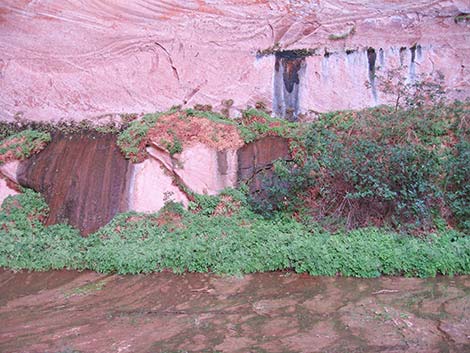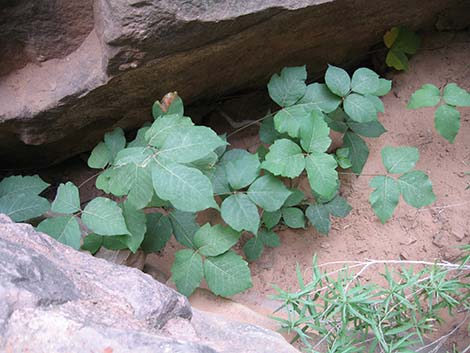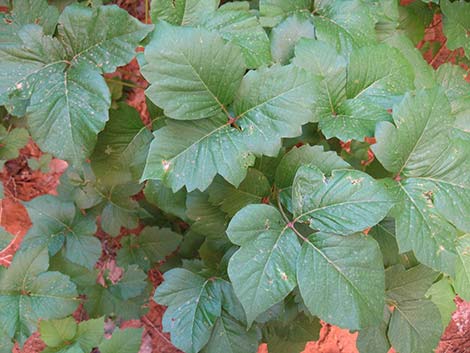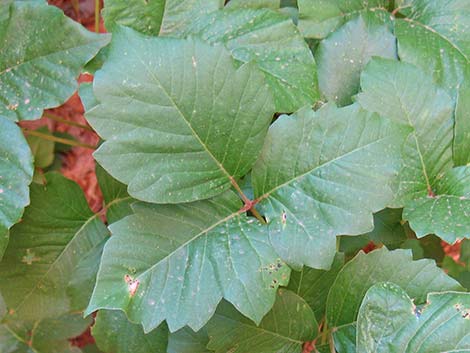
Shrubs Around Las Vegas, Vegetation Around Las Vegas
 |
General: Western Poison Ivy (Toxicodendron rydbergii) is a highly variable plant. Growth forms range from several upright stems, to shiny shrubs, to thickets covering hillsides. The leaves are red, turning green with age, then to red again in the fall; tend to be shiny; and are usually divided into three prominent leaflets. Red berries are produced in the fall. DON'T TOUCH THIS PLANT! The leaves and stems of this plant have an oily or waxy coating that is extremely irritating to some people. Western Poison Ivy is a fairly common component of shrub communities in wet soils in canyons and the lower mountains in the Upper Sonoran (Mojave Desert Scrub and Pinyon-Juniper Woodland) life zone, but not in the southern Nevada and southern California deserts. Look for it in southern Utah canyons. Family: Sumac (Anacardiaceae). Other Names: Poison Oak, Poison Ivy, Rhus radicans, Rhus toxicodendron, Toxicodendron desertorum, Toxicodendron radicans. |
 |
Plant Form: Several growth forms ranging from several upright stems, to shiny shrubs, to thickets covering hillsides. Height: Usually less then 3-ft tall as a stand-alone shrub, but to 10 ft. Can grow up into taller shrubs and trees. Bark: Gray-brown, shows leaf scars. Stems: Often upright with few branches. Leaves: Dioecious; leaves divided, three prominent lobes; each lobe entire, toothed, or lobed. Leaves variable in size, to about 5-6 inches. |
 |
Flowers: Blooms spring through summer. Inflorescence: erect, with many small, pale yellow to white flowers. Seeds: Fruits are BB-sized berries. Habitat: Areas with wet soils in canyons and lower mountains. Elevation: To about 6,000 feet. Distribution: Most of North America, except not in California, southern Nevada, or the deep South. Comments: Oils on this plant can produce extreme skin rashes in some people. |
 |
 |
Note: All distances, elevations, and other facts are approximate. Names generally follow the USDA database.
![]() ; Last updated 220109
; Last updated 220109
| All Shrubs | Plant Species Index | Glossary | Copyright, Conditions, Disclaimer | Home |